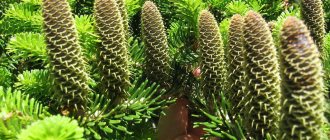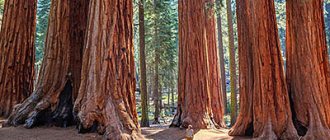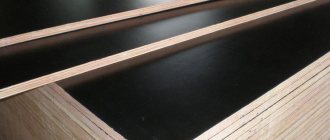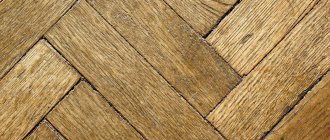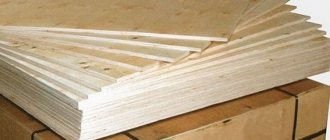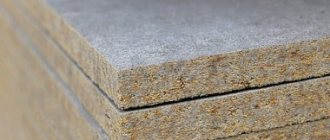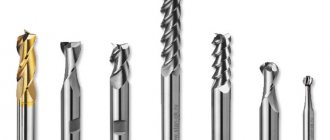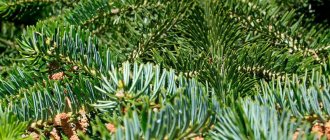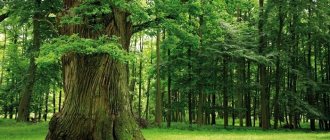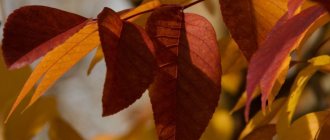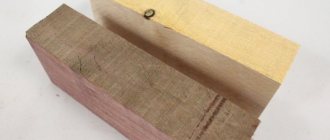Trees are perennial plants with one (less often several) lignified branching central shoot-trunk. They have a powerful root system and spreading crown. Trees are very important for human life and occupy an important niche in the ecosystem.
Anyone who has a dacha or a private house knows that trees must grow on the site. These can be either useful species (such as apple and pear trees), the fruits of which can be eaten, or planted solely for decorative purposes (for example, thuja or maple).
There are many scientific methods for classifying trees. For convenience, we will conditionally divide all trees into 9 groups:
- Conifers;
- Deciduous;
- Decorative;
- Fruit;
- Fruit;
- Small;
- Blooming;
- Indoor;
- Ball-shaped.
The division into these groups is made mainly according to the main distinctive characteristics of plants.
Below we will talk about the most popular trees found in gardens and plots.
Coniferous trees
Conifers are a division of the plant kingdom that includes mostly evergreen plants with needles instead of leaves and seeds that develop in cones.
Coniferous trees are unpretentious in care and can easily withstand harsh conditions. The advantages of this group, from the point of view of use in gardening and landscaping, include:
- Correct form. Conifers require almost no shaping and grow neatly.
- Pleasant aroma. The smell of pine needles has a calming effect on the nervous system.
- Variety of forms. Any composition can be formed from plants of this group.
- Longevity. Coniferous plants live for many years. By planting them on your site, you can forget about the need to plant new plants for many years.
Spruce
Belongs to the pine family. There are about 40 species and hundreds of varieties (including decorative and dwarf ones).
It is easy to care for. The crown is cone-shaped, the branches are arranged horizontally. It can grow up to several tens of meters. It is considered windy, so it is not recommended to grow spruce trees that are too tall on the site, especially near the house.
Pine
Represents the pine family. The needles are longer than those of spruce.
The needles are renewed approximately once every 2-3 years.
It is distinguished by a bare trunk at the bottom. In adult plants, the crown is raised high.
A pine tree can grow as big as a six-story building. It is better to grow decorative varieties and small species.
Cedar
A mighty tall tree with a thick trunk and pyramidal crowns. The needles are three- or tetrahedral, long. When caring for it, it likes high humidity and compliance with the rules of agricultural technology. The period of rapid growth begins after 7 years.
The most popular varieties:
- Lebanese;
- Atlas;
- Cypriot;
- Himalayan.
Fir
It has a characteristic cone-shaped shape.
It is easy to distinguish from a Christmas tree by its flat needles with petioles.
Fir cones grow upward.
Fir is a long-lived plant, but young specimens are better suited for decorating a summer cottage.
INTERESTING. It is the fir that is most often placed in the house for the New Year as a holiday tree.
The most interesting varieties: “Pendula”, “Barabits Star”, “Piccolo”, “Nana”, “Green Globe”, “Compacta”, “Glacier”, etc.
Ketelery
Coniferous tree native to China.
Outwardly very similar to fir.
Young plants are cone-shaped, adults are tiered, umbrella-shaped.
The cones are cylindrical, whole. They look most beautiful when they are still “green”.
Keteleria feels best alone.
Cypress
This plant is a classic for decorating paths, driveways, and alleys.
There are many varieties that differ from each other in appearance. The most popular are pyramidal and evergreen cypress.
In culture, for decorative purposes, the crown is formed cone-shaped or column-shaped, although in nature there are specimens with a spreading crown.
Dwarf, Arizona and lemon are also quite popular .
INTERESTING! Cypress can be grown in an apartment.
Thuja
It is distinguished by small needles collected in bunches, which is why from afar the needles can be mistaken for dissected leaves.
Thuja grows relatively short (growth is limited to 8-12 m).
Quite demanding of care, especially at a young age. Thuja needs regular watering, fertilizing, and crown formation.
There are dozens of species and varieties of thuja. For example:
- Western ( Danica, Fastigiata );
- Pyramidal ( Kornik );
- Blue ( Meldensis );
- Globular ( Hoseri ), etc.
Cypress
A close relative of cypress, but with flatter branches. It also looks like thuja.
In the wild it grows up to 50-60 m, in culture growth is limited to 10-15 m.
Quite capricious in care. At a young age, cypress requires shelter for the winter.
The most popular are pea-like cypress, Lawson's, obtuse, and thuja-like .
Yew
It is distinguished by flat and fairly wide “needles”.
It grows very slowly and lends itself well to pruning, which is why it has become very popular in landscape design.
Picky about care.
INTERESTING. Yew berry bears poisonous red berries. The needles also become poisonous with age.
Other conifers
Also in this group it is necessary to mention trees that are also used in personal plots:
- Larch. A coniferous deciduous tree that sheds its needles in the winter.
- Juniper. The numerous genus combines trees and shrubs. Small forms are the most popular in culture.
- Agathis. Huge trees with spherical cones and a spreading crown.
Agathis Larch Juniper
Conifers
Evergreen trees grow in temperate climates and average humidity. Most common in the northern hemisphere. Among coniferous plants, the oldest and tallest specimens have been recorded. They are classified according to the following criteria:
- one trunk with side branches;
- leaves look like needles;
- fruit - cones in which seeds are formed.
The oldest representative recorded by humans is located in a protected forest in the state of California. The pine tree is about 4900 years old. The tallest tree grows in the same area, its height is 115 m, and its trunk diameter is 4.84 m.
Long-lived fir
This tree can be found in the European part of Russia, Siberia and the Caucasus. The average lifespan of the species is 500−700 years. The maximum height can reach 50 m, and the trunk grows up to 1 m thick.
The characteristic features of fir are the cone-shaped crown. Glossy needles have a dark green tint with white stripes in the stomata. Flat needles are arranged in 2 rows. The color of the bark is predominantly gray, but there are also species with a reddish tint.
Coniferous plants begin to bear fruit at 40–50 years of age. All parts of fir are widely used in medicine, and the wood is valued in furniture production.
Norway spruce (common spruce)
For Russia, this breed is forest-forming. You can meet it in all parts of the state. The average height of the tree is 35 m, but there are giants up to 50 m. The crown is in the form of a cone, starting almost at the base. The upper part always has a pointed end. The trunk thickness is up to 1.2 m, and the age reaches 300 years. Spruce needles are 3 cm long, tetrahedral and flattened. They are characterized by a dark green color.
The tree tolerates partial shade well. If it grows in an open area, it begins to branch at the base . In the forest, the trunk is exposed, and the crown is present in the upper part.
Family Pine
Siberian cedar is a long-liver among conifers, its life expectancy reaches 800 years. Pine grows up to 45 m in height, and the trunk reaches 0.5 m. In the last century, specimens up to several meters thick were found in the Cis-Urals. The slender trunk begins to branch at a level of 1.5–2 m from the base.
The bark is gray or red-brown in color and covered with cracks. The crown has a pyramidal shape; several peaks can often be found. On the branches there are bunches of 5 green needles up to 14 cm long. Young purple cones gradually acquire a brown color, their size is up to 13 cm long and 5-8 cm wide. They are valued for their seeds - pine nuts, which have a pleasant taste and medicinal properties. A mature fruit contains from 30 to 150 seeds.
The tops of Scots pine reach 40 m above the ground. The bark is red-brown in color. In young trees, the crown shape is cone-shaped, while in adults it expands and takes on a rounded shape. Much depends on the growing conditions.
In folk medicine, needles and unopened buds are used. They contain a lot of tannins, essential oils, and vitamins. These substances give pine antiseptic and antimicrobial properties.
European larch is the most common member of the family. You can meet the forest beauty both in the Urals and in the temperate continental part of the country. It differs in height up to 50 m. The crown has a regular cone-shaped shape. Young trees have smooth and thin bark, which becomes cracked with age. You can have specimens that live for about 500 years. Light green needles may have a grayish coating, and grow in bunches on short branches.
Deciduous trees
These are ordinary trees in the truest sense of the word. They have leaves of different shapes and sizes that form the crown. The vast majority of deciduous trees bear fruit. The fruits can be either edible or inedible.
ON A NOTE. In fact, all trees except conifers can be classified as deciduous. But most often this name refers to ordinary deciduous non-fruit trees.
Deciduous trees can be found in any summer cottage. The most common species are linden, birch, poplar, and oak.
Deciduous trees are used in industry, urban landscaping, site decoration, landscape design, etc.
Oak
It has a spreading crown resting on a thick trunk.
It bears fruit with nuts and acorns. The leaves are elongated with a beautiful carved edge.
Due to its anatomical features, oak grows alone in summer cottages.
If you want to plant an oak tree, you must be aware that it needs a lot of space to grow.
There are 3 common types:
- Petiolate;
- Mongolian;
- Rocky.
REFERENCE. An oak tree can be grown from an acorn.
Birch
One of the most popular trees. Homestead classics.
It grows up to several tens of meters, which is why it is potentially dangerous for homes.
Therefore, at a certain stage it is recommended to cut down the old birch tree.
Especially appreciated for the sound of leaves in the wind. There are numerous species and ornamental varieties.
Maple
Maple is prized for its easily recognizable carved leaves.
In autumn it turns yellow-purple.
There are many varieties of maple.
Ornamental, low-growing varieties are grown in small areas.
Linden
The tree has a “classic” appearance of leaves. They are heart-shaped with distinct veins. The crown is spreading.
A linden tree can grow quite tall, but it will take several decades. Mostly 1-2, rarely 3 linden trees are used to decorate the site.
The linden tree also attracts bees to the site.
Linden leaves, flowers and fruits are valued in folk crafts. Healing infusions are prepared from them.
Willow
Willow is easily recognized by its thin, drooping branches that reach to the ground and its sharp, long leaves.
Used to decorate artificial ponds.
Willow species are most often called by their proper names (for example, willow, willow , etc.).
Decorative species and varieties are widely used in landscape design.
Poplar
A widespread representative of the Willow family.
It has a large and tall trunk. Depending on the variety, the crown can be spreading ( Canadian, white ) or cone-shaped ( pyramidal ).
A distinctive feature is the “fluff” with which poplar seeds are carried.
REFERENCE. Poplar “gives” the most oxygen.
Chestnut
A beautiful tree with dissected leaves, one or more straight tall trunks and a spherical or spreading crown.
Fruits with nuts with a shell studded with needles.
Horse chestnut is the most common plant in Russia.
Horse chestnuts can be safely planted in heavy, loamy soils.
Other deciduous trees
Also in this group it is necessary to mention trees that are rarely used in garden plots due to their qualities:
- Alder. A tall tree with rounded leaves and earrings.
- Aspen. One of the types of poplars. The leaves are heart-shaped.
- Hornbeam . Tree with a branching trunk. It looks like an inverted pyramid. The leaves are oval, pointed.
- Elm . A spreading, powerful tree that is poorly resistant to disease. The leaves are wide, oval, palm-sized.
- Ash . The height of the ash tree is about 30 m. The leaves are oval, pointed. The fruits are the famous “helicopters”.
ON A NOTE. However, it all depends on the size of your plot. If you have a huge garden, you can even plant an entire avenue of elms.
Elm Hornbeam Alder Aspen Ash
Which tree sheds its bark? Eucalyptus and its homeland
Australia, New Guinea and Indonesia are considered the birthplace of eucalyptus trees, where there are more than a hundred species. These include bushes and tall trees. This is one of the few trees that sheds bark rather than leaves. In autumn, their superficial, thin, coral-red bark falls off, revealing an underlying green layer that gradually turns red. In some eucalyptus trees the bark is smooth and comes off in long strips, while in others it is covered with scales and remains on the trunk and thick branches. The wood of these trees is also unusual: depending on their type, it can be white, yellow or red.
Ornamental trees
This group includes mainly specimens either bred by selection or naturally possessing striking external characteristics.
Ornamental trees are valued for their flowering and unusual shape of trunk and leaves. Such plants require careful care throughout the year.
When decorating areas in our country, either exotic species (sycamore, scarlet, bear's hazel) or specially bred decorative varieties of familiar trees (maple, alder, birch) are most often used as decorative ones.
Decorative varieties of pine
The most popular are low-growing species and varieties. For example, Weymouth pine, Bosnian pine, pine, as well as dwarf varieties “Pug”, “Varella”, “Glauka”, “Winter Gold” .
Pine Bosnian pine Weymouth pine
Decorative varieties of maple
Maple has long been popular among breeders. Even familiar species are distinguished by the beauty of their leaves and crown. Decorative varieties of maple are used to decorate city streets and garden plots. The advantages of these plants: short growth, predisposition to crown formation, unusual leaf color.
The most popular decorative varieties of maple:
- ash leaf;
- holly;
- false sycamore;
- red;
- silver.
IMPORTANT! Some varieties of ash maple are considered dangerous weeds!
Red maple False sycamore maple Norway maple Silver maple Ash maple
Sycamore
Spreading tree with a dome-shaped crown.
The bark on the trunk is smooth, similar to plastic.
Its peculiarity is peeling.
The leaves look like maple.
Fruits with round nuts.
Low-growing varieties are actively used in landscaping, while tall varieties are used in street landscaping.
REFERENCE. In our country, plane trees can be found, for example, on the streets of Krasnodar.
Decorative varieties of alder
Decorative varieties of alder are mainly used in flooded areas, former swamps, etc. Great for planting on the banks of streams, ponds and other bodies of water.
The most popular types and varieties of this breed:
- pyramidal;
- pinnately incised;
- gold;
- royal;
- Maksimovich;
- fluffy, etc.
Royal alder Fluffy alder Pyramidal alder Pinnately cut alder Maximovich alder Golden alder
Decorative varieties of birch
Recently, decorative varieties of birch have begun to appear in city squares and in many summer cottages. These include mainly low-growing specimens, rarely growing above 2-3 m.
The most popular varieties are “Trost Dwarf”, “Jungi”, “Royal Frost”, “Golden Cloud”, “Long Trunk”, etc.
The difficulties of growing ornamental birch trees include mandatory annual pruning and a large number of pests and diseases.
Birch Golden cloud Birch long trunk Birch royal frost Birch Trost Dwarf Birch Yungi
Loch
A fairly common, not too tall tree with a relatively thin trunk and a luxurious crown. Bears fruit.
Some species are valued for the color and shape of the fruit ( Loch multiflorum ), others for the shade and shape of the leaves ( Loch silvery, Loch angustifolia ).
Due to the color of the foliage, it looks great in contrast next to other plants.
tulip tree
A beautiful flowering, not too tall tree with a pyramid-shaped crown (sometimes inverted).
It is especially prized for its tulip-like flowers.
During flowering, the entire tulip tree turns red-green.
The leaves vaguely resemble oak leaves.
Represents the Magnoliaceae family.
Magnolia
Not too tall tree with a thin branching trunk and spreading crown.
Prized for its stunning blooms.
During which the entire magnolia turns pink.
REFERENCE. It is very difficult to grow in the conditions of a personal plot in most of Russia.
Sumac
A low tree with a thin trunk and thin branches, on which lanceolate, pointed leaves are located opposite each other.
It is most beautiful in autumn due to the purple color of the foliage.
In the conditions of central Russia, one species of this plant is grown - downy sumac.
Rowan
Classic decorative trees.
A thin straight trunk, neat branches and leaves, bright orange fruits collected in clusters.
One of the best trees to decorate absolutely any space.
Rowan is completely unpretentious and grows with minimal care. A sufficiently mature plant grows no higher than 4-5 meters.
With care and regular pruning, it can become the pearl of a garden collection.
Other ornamental trees
You can also sometimes find other types of wood used for decorative purposes. For example:
- Weeping mulberry. A variety of mulberry with deciduous branches like a willow. Outwardly, it is very similar to an umbrella or a ball on a leg.
- Honey locust. A spreading branched tree with an openwork crown and small lanceolate leaves growing opposite each other.
- Robinia . Distributed in the southern regions of Russia. Blooms with beautiful bright pink flowers.
Weeping mulberry Robinia honey locust
Fruit trees
Most deciduous trees bear fruit, but it so happens that fruit trees are those whose fruits can be eaten. Fruits can be different in shape, composition, weight, size, and energy value.
Fruit trees are ubiquitous. Now there are tens of thousands of their varieties, varieties and hybrids. Selection constantly improves yield, fruit quality and resistance to adverse environmental conditions, pests and diseases.
Plum
A very common small tree with edible fruits, which are widely used in cooking for making jams, juices, tinctures, etc.
Capable of growing from a seed.
Gets sick quite often. The main thing in care is treatment against pests and diseases.
There are hundreds of species and varieties of plums. The most famous and easily accessible: “Hungarian”, “Oda”, “Alyonushka”, “Opal”, “Romen”, “California”, “Zhiguli” and many others.
Cherry plum
It's also called cherry plum.
A tree with edible fruits similar to yellow plums.
It is mainly distributed in the southern regions, although in recent years breeders have developed varieties that are resistant to the climate of the Moscow region (“Rocket Seedling”, “Shater”, “Monomakh”, “Peach”, etc.).
Cherry
Another common fruit tree with small red fruits growing in a bunch on long petioles.
Features stunning flowering.
Cherries are one of the first to bear fruit in the season. The fruits are widely used in cooking. In many countries it is produced on an industrial scale.
Over centuries of breeding, hundreds of different varieties have been created. Among those that can be bought right now in any online store: “Zhukovskaya”, “Putinka”, “Ksenia”, “Winter Giant” .
Cherries
The closest relative of the cherry.
The cherry tree itself is much taller than the cherry tree (it can even reach 30 m).
The fruits are larger and slightly sweeter.
Interesting varieties for the Middle Zone and Moscow region - “Iput”, “Fatezh”, “Lesya”, “Velvet”, “French Black”, “Franz Joseph”, etc.
Mulberry (Mulberry)
A tree about 10-15 m high from the Mulberry family.
The leaves are heart-shaped. The fruits look like elongated raspberries.
Grows mainly in warm regions. In our country it can be found in the southern regions.
The most widespread species are White Mulberry and Black Mulberry .
Walnut
A tall tree with a straight trunk and a dense crown of wide oval leaves.
Bears fruit. Grows relatively slowly.
Does not tolerate severe frosts, especially when young.
Walnuts require careful care during the first few years after planting.
Popular Russian varieties: “Dessert”, “Elegant”, “Aurora”, “Zarya Vostoka”, “Urozhayny”, etc.
Sea buckthorn
A small, thorny tree with lanceolate leaves.
It bears fruit with densely arranged berries (drupes) of orange color. Not the most common tree.
The fruits have medicinal value and are highly valued. Sea buckthorn berries are used not only in cooking, but also in medicine and light industry.
Other fruit trees
Also in this group it is necessary to mention trees that are much less commonly grown on personal plots:
- Irga . A small tree with dark purple fruits similar to chokeberries and leaves similar to apple trees.
- Almond. A beautifully flowering small tree with bright pink flowers and long lance-shaped leaves growing in a tuft.
- Dogwood. A small tree with bright red fruits, similar to small plums.
- Chokeberry (Chokeberry). A tree that looks very similar to rowan, but with black berries. It is considered a medicinal plant. The berries are used for winemaking.
Irga Dogwood Almond Chokeberry
Fruit trees
This group contains trees that bear fruit.
ON A NOTE. Virtually all fruit trees are fruit trees. The identification of such a group is conditional.
In our country, due to harsh climatic conditions, the number of fruit trees is very limited. Even compared to Mediterranean countries and the Balkans. Although in the southern regions you can grow quite exotic fruits.
The most popular representatives of fruit species in Russia are apple trees, pears and apricots. In Crimea and the Krasnodar region you can grow figs and peaches.
Apple tree
The most common fruit tree. Belongs to the Pink family. The genus includes 62 species and more than 10,000 varieties of domestic apple trees alone.
The varieties differ from each other in the appearance of the trunk, branches, size, color and taste of the fruit.
The apple tree is valued not only for its fruits, but also for its memorable flowering. Because of this, it can also be grown as an ornamental plant.
The most famous varieties are “White filling”, “Antonovka”, “Strifel” .
Pear
The second most popular breed of fruit trees.
Pear fruits differ from apples by their characteristic elongated, teardrop-shaped shape.
Although there are varieties (including wild ones) with round fruits.
Cultivated for several thousand years. Produced on an industrial scale around the world.
The most famous varieties are “Bergamot”, “Duchess”, “Sibiryachka” .
Apricot
In central Russia and the Moscow region, apricot appeared relatively recently with the development of frost-resistant varieties.
Apricot is a low branched tree. It grows quite slowly. The fruits are formed in July (in the Middle Zone). Outwardly, they look like plums, but they are a different color and not as glossy.
Apricot is very capricious and easily infected with fungal diseases.
Apricot fruits are used in cooking, both dried and fresh.
Popular varieties are “Honey”, “Tsarsky”, “Lel”, “Iceberg” .
Figs
He is also the Fig tree, Ficus carica, Fig tree.
A spreading tree with leaves that look like a cross between maple and chestnut.
Distributed in Crimea, Krasnodar Territory and the Caucasus.
The fruits are drop-shaped, deep purple with bright red flesh. Used in cooking and medicine.
Other fruit trees
Also in this group it is necessary to mention trees that are grown much less frequently on personal plots in the Middle Zone and Moscow region, but are found in dachas in the South of Russia:
- Peach . It is a product of selection. The fruits are covered with fluff and are the size of an apple.
- Quince . A tree with oval leaves and small “apples” - fruits.
- Nectarine . It is a variety of peach, but with smooth fruits.
Quince Nectarine Peach
Trees, characteristics
After reading all about trees, we can confidently say that they are a form of woody plants that consist of a trunk, root and crown. There were three trillion trees on our planet in 2015.
This vegetation grows almost everywhere, with the exception of some desert areas and Antarctica.
If you study the description, a tree is a complex mechanism. Even today, scientists have not been able to understand some of the processes that occur inside its cells. Of particular interest has always been photosynthesis, through which carbon dioxide is converted into oxygen.
small trees
This group contains trees that either grow too slowly or are not at all capable of growing above a few meters.
Such breeds are highly valued for decorating public gardens, areas in front of municipal and federal institutions, and also among some summer residents.
ON A NOTE. The identification of this group from others is very arbitrary and is based on one single characteristic, namely the height of the plant.
Pavia
It is a variety of horse chestnut.
A low tree with a thin trunk and spreading crown.
It is distinguished by bright red inflorescences.
On average, the height of the tree is 3-6 meters, but some specimens reached 12.
Palm maple
A low tree (about 6 m) of several thin trunks.
The leaves are similar to the usual maple, but slightly more pointed.
Instances of even the same variety differ significantly from each other.
The most popular red-leaved varieties of this tree.
Niedzvetsky apple tree
A low ornamental tree with a thin trunk.
It is distinguished by a reddish tint to the bark, leaves and petioles. The flowers are bright scarlet. Bears fruit.
Hawthorn
This is a small tree from the rose family.
Valued for its healthy fruits - “apples”.
Hawthorn does not take up much space and pleases with its flowering and fruiting.
Great for planting along alleys and paths.
Purpleberry (Tsercis)
A small tree with one or more trunks.
The most popular species are Cercissus canadensis and Cercissus japonica . Prized for its bright red foliage in autumn. It blooms very beautifully in spring. The flowers are pink. They grow both on branches and directly on trunks.
Actively used in breeding. Low-growing varieties with different shades of leaves and flowers are developed.
Some varieties have drooping branches, which makes them look like willow (for example, the variety "Ruby Falls" ).
Aralia
Representative of the family of the same name.
It is distinguished by its short stature, thin branches, heart-shaped leaves and umbrella-shaped inflorescences.
Resistant to diseases and pests.
IMPORTANT! Some parts of the plant are poisonous.
Iwa Matsudana
This variety of willow has a twisting trunk and branches that look like thick copper wire. It does not grow very large, but the crown can spread 10 m in diameter. It is resistant to frost, loves lighted areas, and is otherwise easy to care for.
Interesting facts about baobab
Mighty baobab trees grow in the vastness of the African savannah. This variety of trees received its scientific name - Adansonia palmata - in honor of the French scientist Michel Adanson and thanks to its five or seven-fingered leaves. The tree is famous for its size - the height of the baobab can reach 40 m, and the thick trunk in diameter is about 10 m. And it is believed that this giant can exist for 5,000 years. Baobabs grow not only in Africa, but also in Madagascar and Australia.
The trunk of a baobab tree is capable, like a sponge, of storing water reserves. Its long roots suck up moisture deep underground, allowing the tree to survive dry seasons.
Baobab flowers reach 20 cm in diameter. Moreover, they bloom only one night, and they are pollinated by bats. And the next morning the flowers wither, acquiring a putrid smell, and fall off.
Baobab fruits are somewhat similar to pumpkins - they have a lot of seeds, pulp inside and a hard peel on the outside. They are healthy and high in calories. Monkeys love them, so baobab has another name - monkey breadfruit.
During the dry season, baobabs shed their leaves, but during the rainy season they again show off their green crowns. An interesting fact about the baobab tree is that Africans not only eat its fruits, but also use the leaves for sourdough and to treat malaria. In addition, fiber is obtained from the bast layer, which is located under the bark, and strong ropes and threads are made. There is even a proverb in Senegal: “Helpless as an elephant tied with a baobab rope.” The baobab is considered a sacred tree in Africa.
Huge hollows often form in the trunk of the baobab tree. In Africa they are used as water reservoirs. And in one Australian town, a prison was set up in a hollow baobab tree with a trunk 6 m in diameter.
Elephants, unlike monkeys, eat not only baobab fruits. They gather near a tree, break its branches, tear off the bark, leaves and eat it all. Therefore, it is rare to find a tree with an intact crown - most often it is partially eaten away. It’s not for nothing that the baobab tree is also called the elephant snack bar.
Blooming trees
This group conventionally includes trees with stunning, memorable flowering. Flowering trees can also be fruit trees, small trees, etc.
Bird cherry
Representative of the Pink family. It has oval bright green leaves and bears black berries.
Spreading, not very tall (up to 10 m) tree. Inflorescences are racemose. During flowering it emits a rich, bright aroma.
IMPORTANT! The smell of bird cherry can cause an allergic reaction.
White acacia
A relatively tall tree with a branching trunk and a dense dense crown of small oval leaves. The crown is spherical, but sometimes there are “tiers”. A distinctive feature of acacia is its stunning flowering, accompanied by a fragrance.
Flowers grow in inflorescences. The shape resembles bells of a soft cream color.
REFERENCE. It is a honey plant.
Snowbloom
A low tree, usually growing with several branched trunks. Quite spreading. The extreme branches often bend to the ground.
The snowflower is lushly covered with leaves, which is why from a distance it resembles a green (and in autumn golden) hemisphere. The most popular types are Virgin, Blunt .
Lily of the valley tree (Galesia)
A low tree with a thin trunk, a pyramidal crown and numerous white or white-pink inflorescences of small bells.
In our area, 2 types of galesia take root, Carolina and Mountain Galesia . Requires careful care: regular watering, sanitary pruning, mulching, treatment against pests and diseases, etc.
Paulownia
A relatively low tree (3 m) with a spreading crown, wide heart-shaped leaves and bright purple inflorescences.
Popular varieties of paulownia: Felt (best established in Russia), Sapphire tree, Fortune, Fargeza , etc.
Sakura Kwanzan
An artificially grown variety of sakura with a funnel-shaped crown.
Doesn't grow very tall.
Has large leaves. Blooms with soft purple flowers. Sakura Kwanzan bears fruit. The fruits are edible.
Indoor trees
In recent years, growing exotic trees as indoor plants has become very popular.
Indoor specimens do not differ in anything other than their size from their counterparts growing outside.
The advantages of indoor trees are their ease of care compared to conventional flowers and their long-term growth, which eliminates the need for the gardener to carry out annual replanting and rejuvenation. Also, some varieties bear fruit (for example, lemon tree, tangerine, avocado).
Some indoor trees have long become classics of home flower beds. First of all, we are talking about palm trees, Money Tree and Dracaena.
A coffee tree
At home, it grows slightly lower than an indoor palm tree.
The coffee tree has a thin trunk (usually several) and large oval leaves.
The surface of the sheet plates is glossy and ribbed.
It can bloom, the flowers are white and are formed on annual shoots.
Avocado
This indoor tree can be grown from a seed.
It bears fruit quite rarely in an apartment.
The peculiarity of this plant is that you can plant several seeds in one pot, and then intertwine the trunks as they grow.
Avocados are easy to form a crown.
Lemon Tree
In the apartment it grows to approximately 1.5 m in height.
The stem becomes woody gradually.
Forms a fairly spreading crown by the standards of indoor trees.
It bears fruit even in an apartment with proper care. Needs feeding.
Mandarin
It grows quite small.
Typically, a tangerine tree in an apartment rarely exceeds 1 m.
It bears fruit and is fragrant during flowering.
Mandarin usually forms one trunk, which begins to branch in the upper half.
European dwarf olive
A tree with a twisting trunk and tiered leaves.
It grows approximately 1-1.5 m.
It bears fruit only after several years of cultivation.
Olive is unpretentious in care. Resistant to diseases and pests.
Palm trees
A large group of plants, which includes both representatives of Palmaceae and False Palmaceae. They differ from palm trees growing in the wild only in size and the inability to bloom and bear fruit.
The most popular palm trees: Washingtonia, Butia, Areca, Licuara, Howea, Hamedorea , etc.
Areca Butia Washingtonia Licuara Hamedorea Howea
Laurel
An evergreen tree that at home looks more like a shrub.
It is distinguished by leaves with a noticeable light edge.
The laurel lends itself to shaping not only the crown, but also the trunk.
The most popular varieties are Laurel of the Azores and Laurel Noble .
Indoor eucalyptus
Represents the Myrtaceae family. At first it appears as a shrub in the form of an inverted pyramid of small oval leaves.
Gradually grows to 1 - 1.5 m. Needs annual replanting.
ON A NOTE. Eucalyptus is a very useful plant that can purify indoor air.
Other indoor trees
Also in this group it is necessary to mention other trees and woody shrubs:
- Abutilone . Otherwise, indoor maple. This name is due to similar leaves. But the flowers resemble an open tulip.
- Crassula . The famous money tree. It is an ordinary tree in miniature. It has thick, dense leaves.
- Ficus . Woody varieties are often grown in apartments. The most popular varieties are Ficus benjamina, Elastica and Bengal .
- Dracaena. Similar to a palm tree, but the leaf blades point up instead of down.
Abutilon Dracaena Crassula Ficus
Sequoia tree: photos and interesting facts
The evergreen sequoia tree is considered the national symbol of California. This plant is a member of the cypress family and is sometimes called "mahogany." But the sequoiadendron, a representative of a different genus, was called the “giant sequoia.” In the wild, these trees grow on the Pacific coast of North America. Some specimens of sequoia reach a height of more than 100 m. An interesting fact about sequoia is that these trees are among the tallest on Earth, their age is 3,500 years.
Fifteen of the surviving evergreen sequoias are over 110 m tall, and the record was set by a sequoia called “Hyperion.” Its height, measured in 2006, was 115 m. Scientists believe that in principle any tree cannot reach 122-123 m, because the force of gravity will not allow tree sap to rise to such a height.
Sequoiadendron "General Sherman" is named after a participant in the American Civil War. This tree is not the tallest (only 83.8 m), but in terms of wood volume it is a world record holder - 1487 m3. And the age of this giant is 2300-2700 years.
See other photos of the sequoia tree in the photo gallery below:
Ball-shaped trees
It is customary to classify trees as spherical as trees that can be easily pruned and whose crown can be easily formed into a ball.
ON A NOTE. For greater effect, the lower branches of ornamental plants are removed, which makes them look like balloons on a string.
Ball-shaped trees are highly valued by landscape designers, although in recent years the formation of a crown in the form of a cube rather than a ball has become popular.
Swamp oak "Green Dwarf"
A variety of oak. The variety is distinguished by a spherical crown.
The leaves resemble maple. The trunk is thin and straight.
Loves the sun, but is generally quite resistant to bad weather.
It grows best when planting 2-year-old seedlings.
Boxwood
A small, slow-growing tree from the Boxwood family. Easily amenable to crown formation.
Boxwood has neat oval leaves with a yellowish edge.
Bears fruit. Boxwood fruits look like small yellow apples.
They grow on rocky slopes.
Goat Willow
Like any other willow, the branches droop down.
By shortening, the crown can be given almost any shape.
Unlike the usual willow, the leaf blades of this variety are oval, slightly pointed.
A fast-growing tree that can reach a height of 15 m.
Thuja occidentalis
Varieties of this tree species have a rounded crown.
It just needs to be trimmed a little.
Beech
Spreading tree with a spherical crown.
Unlike others, it can grow up to 25 m in height.
It has leaves of rich green color.
Forest beech is especially beautiful in autumn, when the leaves first turn yellow and then dark burgundy.
The largest and smallest tree
- The largest tree is called "Hundreds of Horses". It grows in the eastern part of Sicily. From the active volcano Etna to the place where this tree grows, it is 8 km. The tree was able to enter the Guinness Book of Records because its trunk girth is 57.9 m.
- The dwarf willow is called the smallest tree on our planet. As a rule, this plant grows only up to 1-6 cm in height. The leaves of this type of tree are shiny and round, and their diameter is 1-2 cm.
